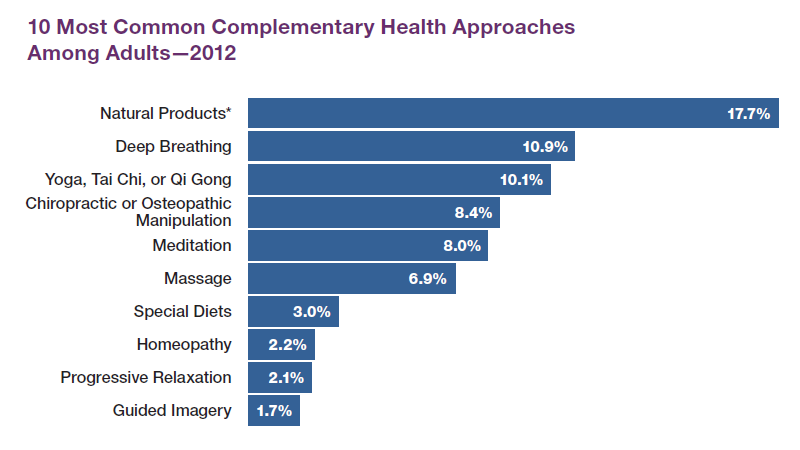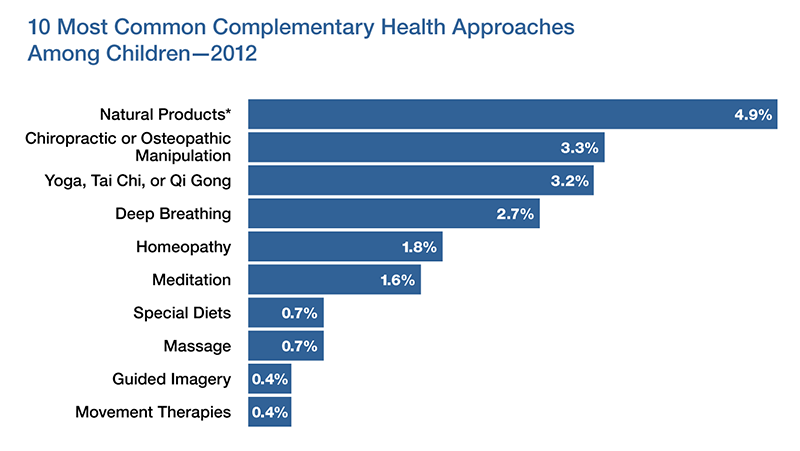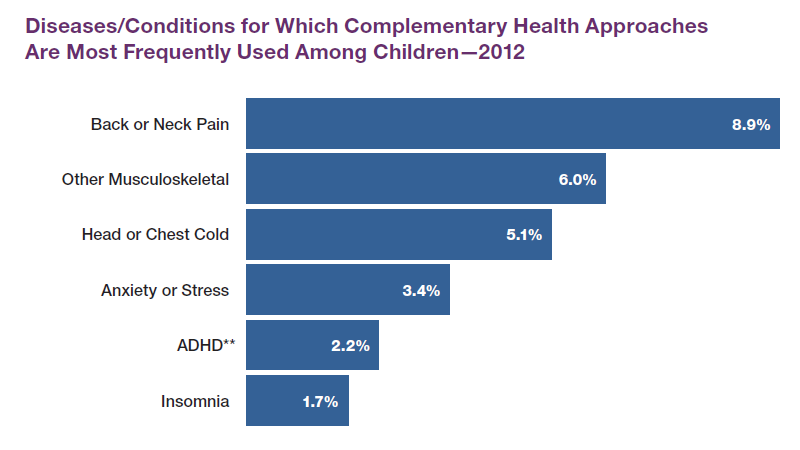Use of Complementary and Integrative Health Approaches in the United States, 2012


**Nahin RL. 2016. National Health Interview Survey 2012 data on diseases and conditions for which adults use complementary health approaches. Unpublished raw data.
Source: Clarke TC, Black LI, Stussman BJ, Barnes PM, Nahin RL. Trends in the use of complementary health approaches among adults: United States, 2002–2012. National health statistics reports; no 79. Hyattsville, MD: National Center for Health Statistics. 2015.


* Dietary supplements other than vitamins and minerals.
** Attention-Deficit Hyperactivity Disorder (ADHD)
Source: Black LI, Clarke TC, Barnes PM, Stussman BJ, Nahin RL. Use of complementary health approaches among children aged 4 to 17 years in the United States: National Health Interview Survey, 2007–2012. National health statistics reports; no 78. Hyattsville, MD: National Center for Health Statistics. 2015.